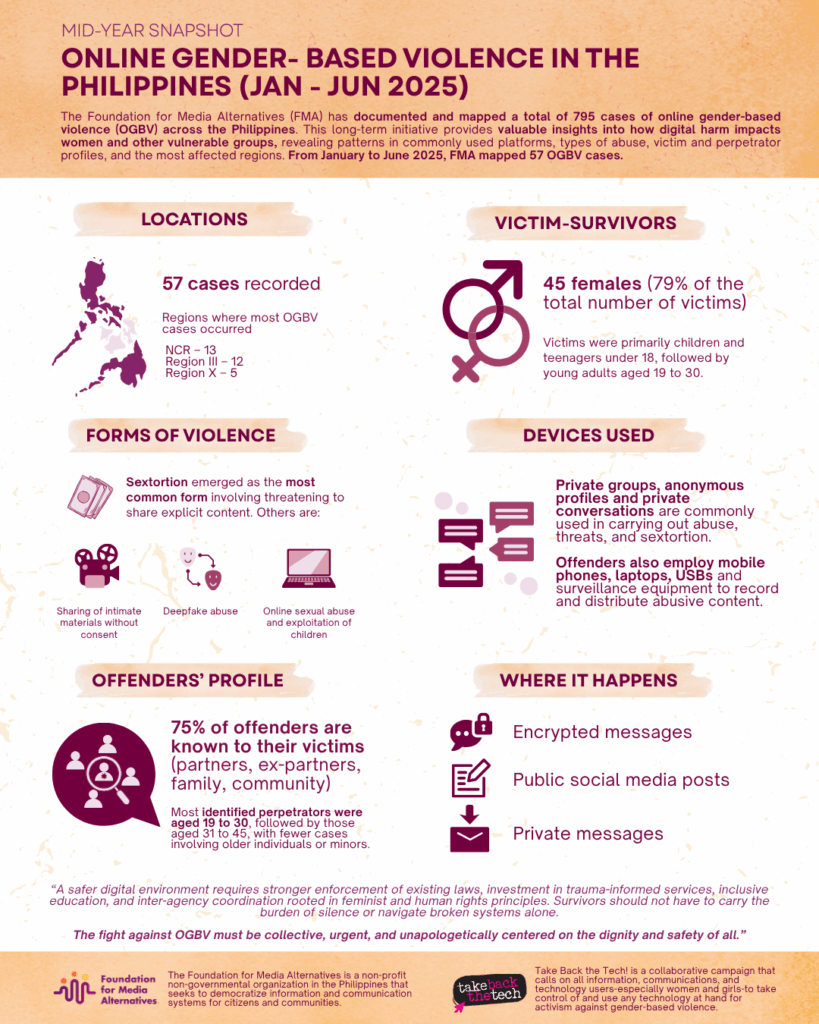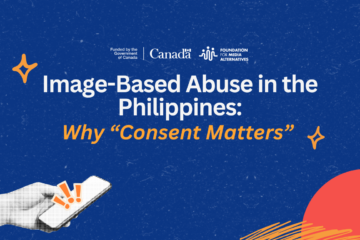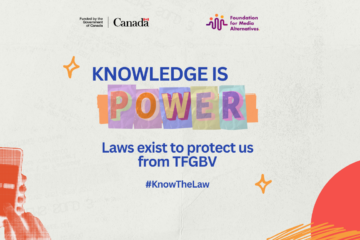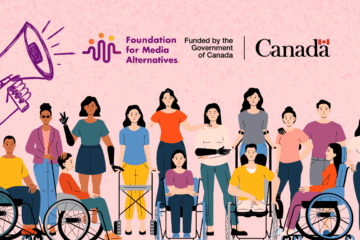Online Gender-Based Violence in the Philippines: 2025 Mid-year Report

Online gender-based violence (OGBV) refers to acts of harm, harassment, and discrimination that are perpetrated through or amplified by digital technologies and disproportionately impact women, LGBTQIA+ people, and other marginalized genders. As digital engagement grows in the Philippines, so does the scale, intensity, and complexity of such harm.
Since 2012, the Foundation for Media Alternatives (FMA) has documented and mapped a total of 795 cases of OGBV across the Philippines. This long-term initiative provides valuable insights into how digital harm impacts women and other vulnerable groups, revealing patterns in commonly used platforms, types of abuse, victim and perpetrator profiles, and the most affected regions.
Between January and June 2025, FMA recorded 57 new OGBV cases through media monitoring, survivor interviews, and reports received via its dedicated email service. This figure marks a significant rise compared to previous years, underscoring the growing scale of online abuse and the urgent need for stronger, gender-sensitive digital protections and coordinated institutional responses.
What We Saw: Key Patterns in Online Gender-Based Violence (January – June 2025)
Based on the 57 reported cases of OGBV, sextortion emerged as the most common form, with 21 cases involving threatening to share explicit content. This is followed by the 19 cases of online sexual abuse and exploitation of children (OSAEC). Online sexual abuse in a form of sharing photos/videos without consent, includes screen recording, video capture, or photo taking without permission was reported in 9 cases, while online trafficking and exploitation involving surrogacy or prostitution, appeared in 6 cases. There were 5 incidents of online harassment, slander, or extortion (not necessarily sexual). Less frequent, but still significant, were individual reports of deepfake abuse, sexual and physical assault facilitated through online platforms, and online sexual harassment, each accounting for 1 case.
It is important to note that each reported case may fall under multiple categories or manifestations of OGBV, as these harms often intersect or overlap and may not always be neatly categorized.
Most cases came from various regions in the Philippines, with the highest numbers in the National Capital Region (13), Region III – Central Luzon (12), and Region X – Northern Mindanao (5). Victims were primarily children and teenagers under 18, including infants as young as two months, followed by young adults aged 19 to 30. Some cases involved both minors and adults, while many did not disclose age, reflecting the challenges and sensitivity in documenting such cases.
Most reported OGBV cases involved women and girls, including minors, highlighting the ongoing gendered nature of digital abuse. Of the identified survivors, at least 45 were female and 9 were male, with several opting not to disclose their gender identity. While most were cisgender, the lack of detailed SOGIE data suggests underreporting among LGBTQIA+ and non-binary individuals, underscoring the need for inclusive data collection and support systems that recognize and protect all survivors, regardless of gender identity or expression.
Perpetrators used various digital tools and platforms to carry out abuse, including mobile phones, laptops, and apps like Facebook, Messenger, Telegram, and GCash. Abusive content was often shared on social media, in private messages, or through work-related group chats, and evidence was sometimes found on USBs, CCTV, and online accounts. In some cases, platform details were not disclosed, pointing to gaps in reporting or sensitivity of the incidents. These trends highlight the misuse of both mainstream and encrypted technologies and stress the need for stronger platform accountability and survivor-centered digital safety measures.
A survivor’s case may fall under different categories of violations, types of harms and strategies
In the first half of 2025, reported cases of OGBV in the Philippines included a wide range of abuses such as non-consensual sharing of intimate images, secret recordings, deepfakes, sextortion, blackmail, online harassment, defamation, and even physical assault linked to digital platforms. Serious violations like OSAEC, child trafficking, livestreamed abuse, and online trafficking related to prostitution and surrogacy were also documented.
These abuses resulted in deep and interconnected harms. Survivors reported lasting sexual, psychological, and emotional impacts often describing trauma comparable to physical sexual assault. Many also faced reputational damage, physical threats, economic loss, and social exclusion. In some cases, the abuse led to victims leaving school or jobs due to stigma and fear.
Victim-survivors, along with concerned citizens and authorities, actively sought justice and protection. Many cases were reported to law enforcement agencies such as the PNP Anti-Cybercrime Group and the NBI, including its units on human trafficking and violence against women and children. According to the PNP-ACG, gender-based cybercrime has grown in recent years. In 2023, the PNP reported that they received a total of 121 sextortion cases, up from 110 in 2022, and 347 voyeurism offenses in 2024, up from 294 the previous year. Apart from the reality that OGBV is growing rampant, this increasing statistic can be owed to victim-survivors’ courage to report and hold their perpetrators to account.
Survivors also pursued civil remedies under laws like the Safe Spaces Act and took personal actions such as reporting abuse to platforms, blocking offenders, or confronting them directly. These combined efforts led to several law enforcement operations including entrapment, search and seizure, and inquest proceedings, which resulted in the arrests of the perpetrators.
The Offenders
Similar to previous yearly reports, most OGBV perpetrators implicated in cases from January to June 2025 were known to the victims such as partners, ex-partners, acquaintances, or community members, accounting for 75% of reported cases. This shows how digital abuse often occurs within personal relationships, where trust can be manipulated. Another 14% of cases involved unknown individuals using fake or anonymous accounts, while 12% were linked to online mobs or coordinated groups. Notably, some cases identified state actors or public officials as perpetrators, particularly during the election period, raising concerns about abuse of power.
Most identified perpetrators were aged 19 to 30, followed by those aged 31 to 45, with fewer cases involving older individuals or minors. However, many reports lacked age data, highlighting documentation gaps once again. The majority of perpetrators were male (43 cases), with 7 female offenders and a few involving mixed-gender groups or unknown identities, reflecting persistent gendered dynamics in online abuse.
OSAEC Cases
The Philippines remains a global hotspot for OSAEC, with cases continuing to rise in both volume and severity. Reports from law enforcement and civil society highlight a steady stream of cyber tips and rescue operations, many involving the live-streaming of child sexual abuse often taking place within the victims’ own homes. Most victims are girls under 18, with some as young as toddlers, exposing the urgent need to strengthen online child protection and prevention efforts in the country.
Over the years, FMA has documented an alarmingly steady increase in cases of OSAEC across the Philippines despite of the availability of the laws and mechanisms to protect children in digital environments.
In response, government agencies such as the Department of Social Welfare and Development, Department of Justice, and local social welfare offices, along with international partners like Homeland Security Investigations, Destiny Rescue, and International Justice Mission, have conducted rescue operations and provided psychosocial care and shelter to victims.
Towards A Safer Digital Spaces for All
The rise in reported cases of OGBV from January to June 2025 highlights an urgent and ongoing digital crisis, one that disproportionately affects women, children, LGBTQIA+ individuals, and other marginalized communities. While there have been policy gains and increased public awareness, gaps in survivor-centered support, SOGIE-inclusive responses, and digital platform accountability continue to leave many at risk.
This mid-year snapshot is not just a record of harms – it is a call to action. A safer digital environment requires stronger enforcement of existing laws, investment in trauma-informed services, inclusive education, and inter-agency coordination rooted in feminist and human rights principles. Survivors should not have to carry the burden of silence or navigate broken systems alone.
The fight against OGBV must be collective, urgent, and unapologetically centered on the dignity and safety of all.#
Disclaimer: The figures presented are based on internal case mapping conducted by the Foundation for Media Alternatives (FMA). These may not represent the full national scope but provide indicative patterns observed in documented cases.



0 Comments